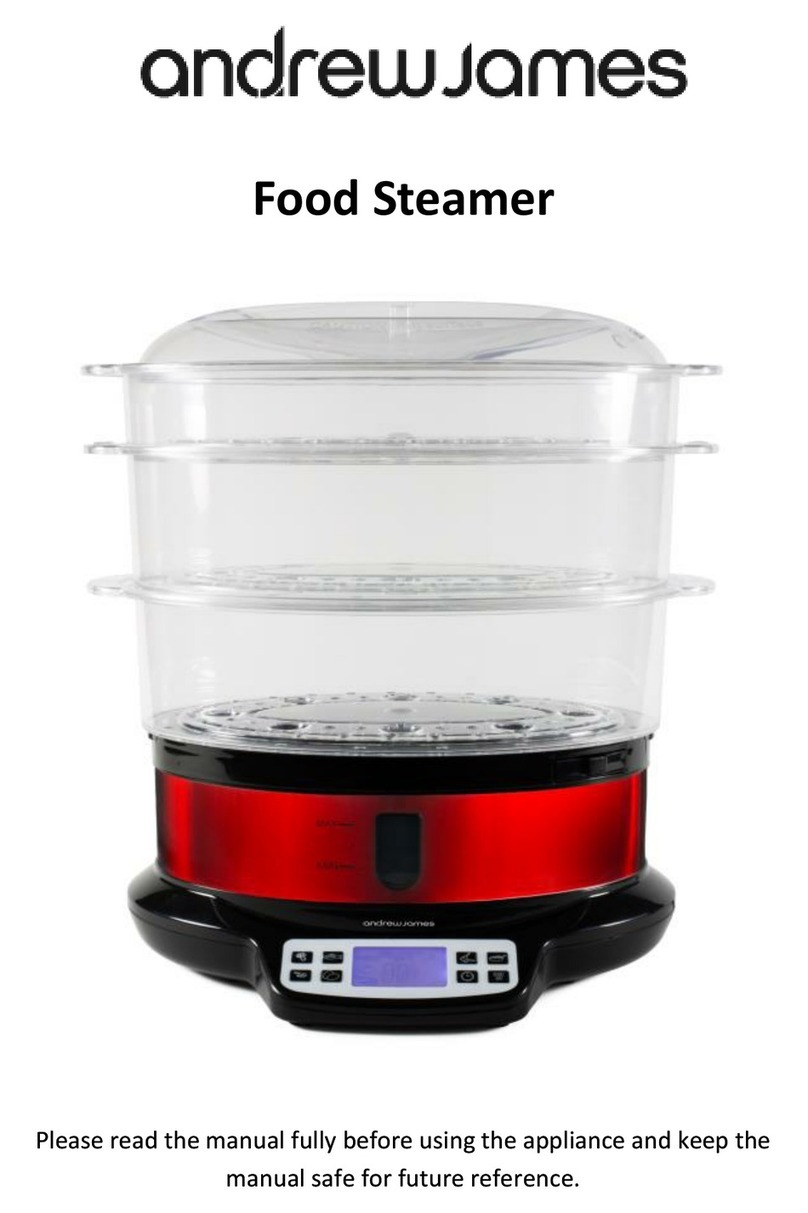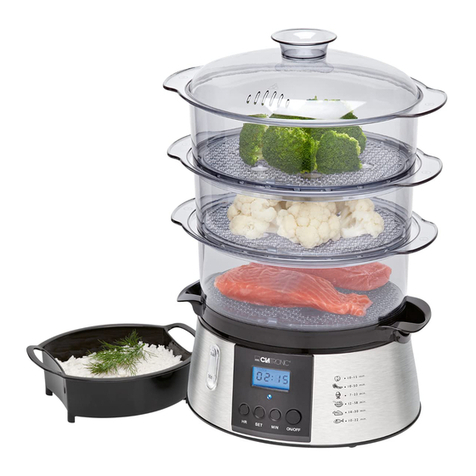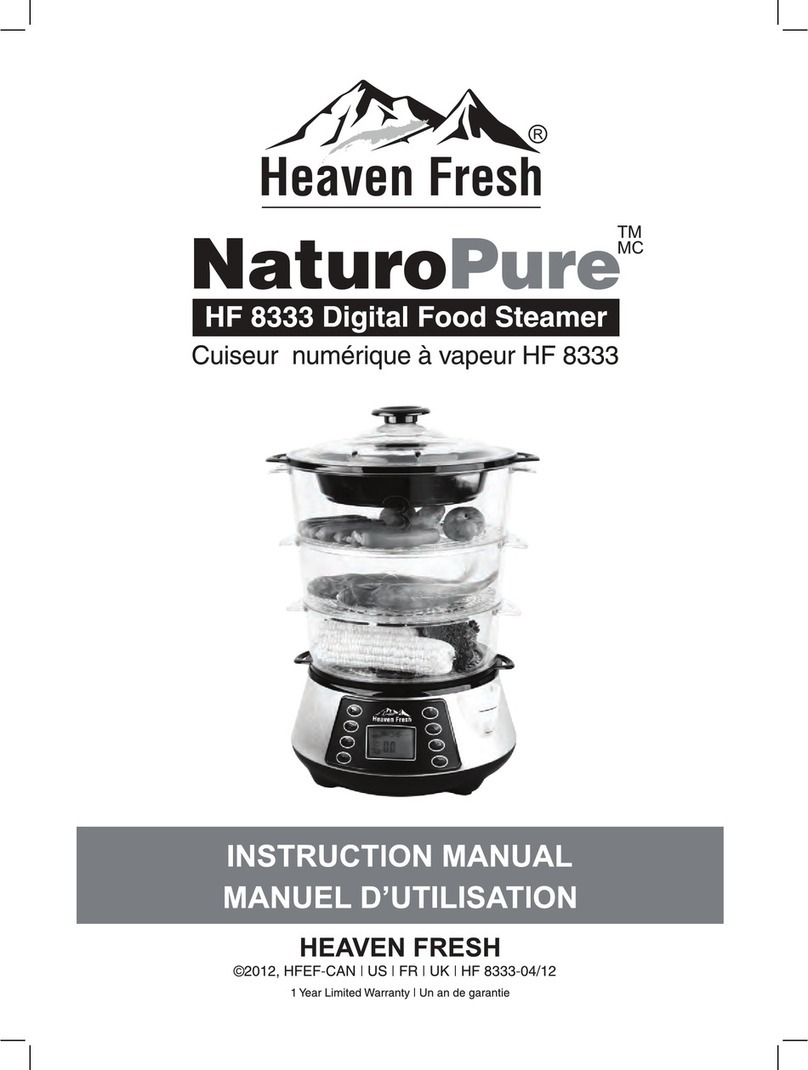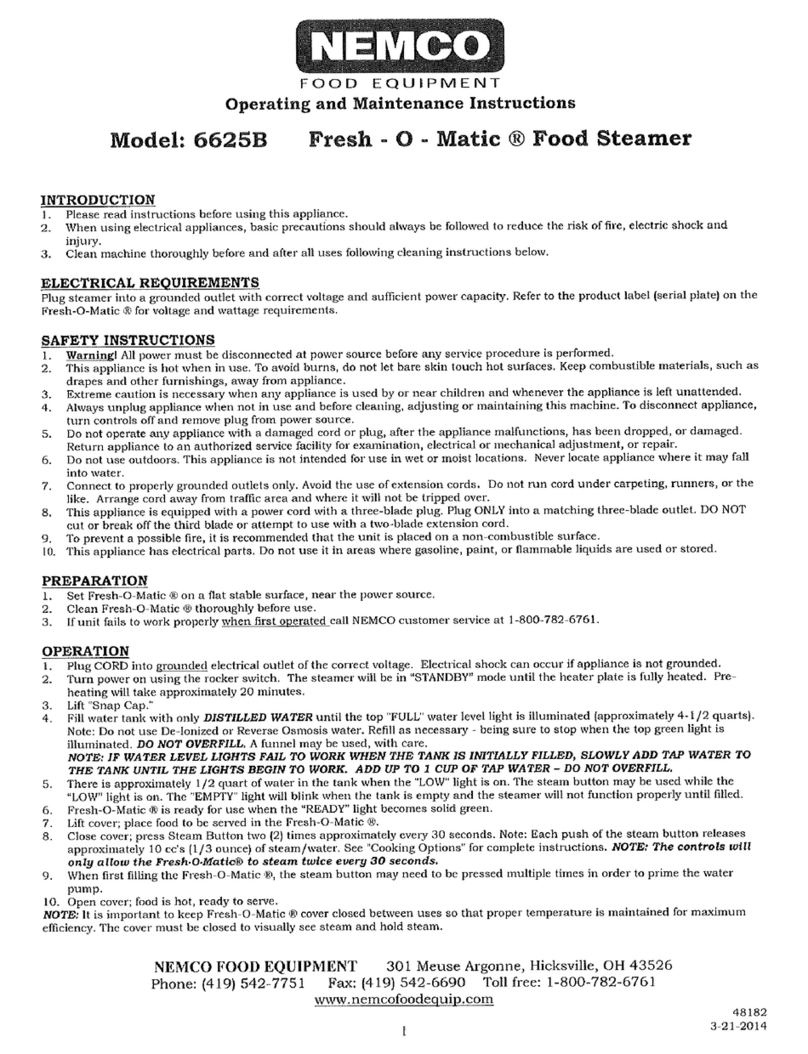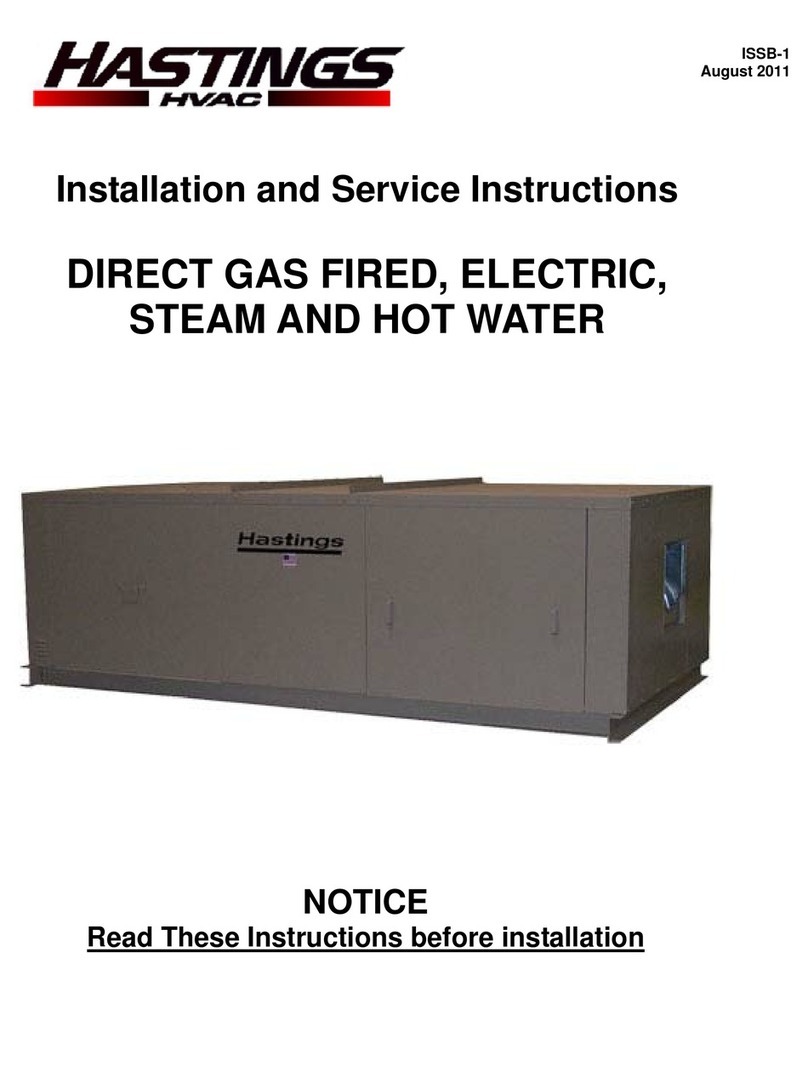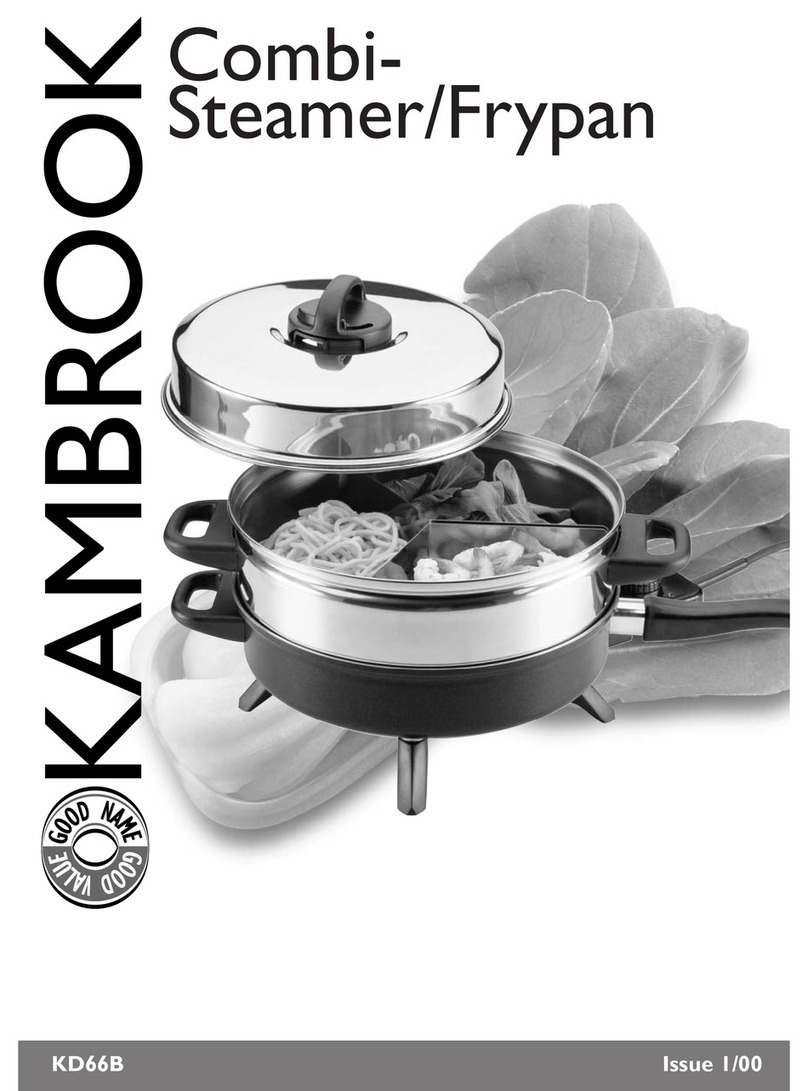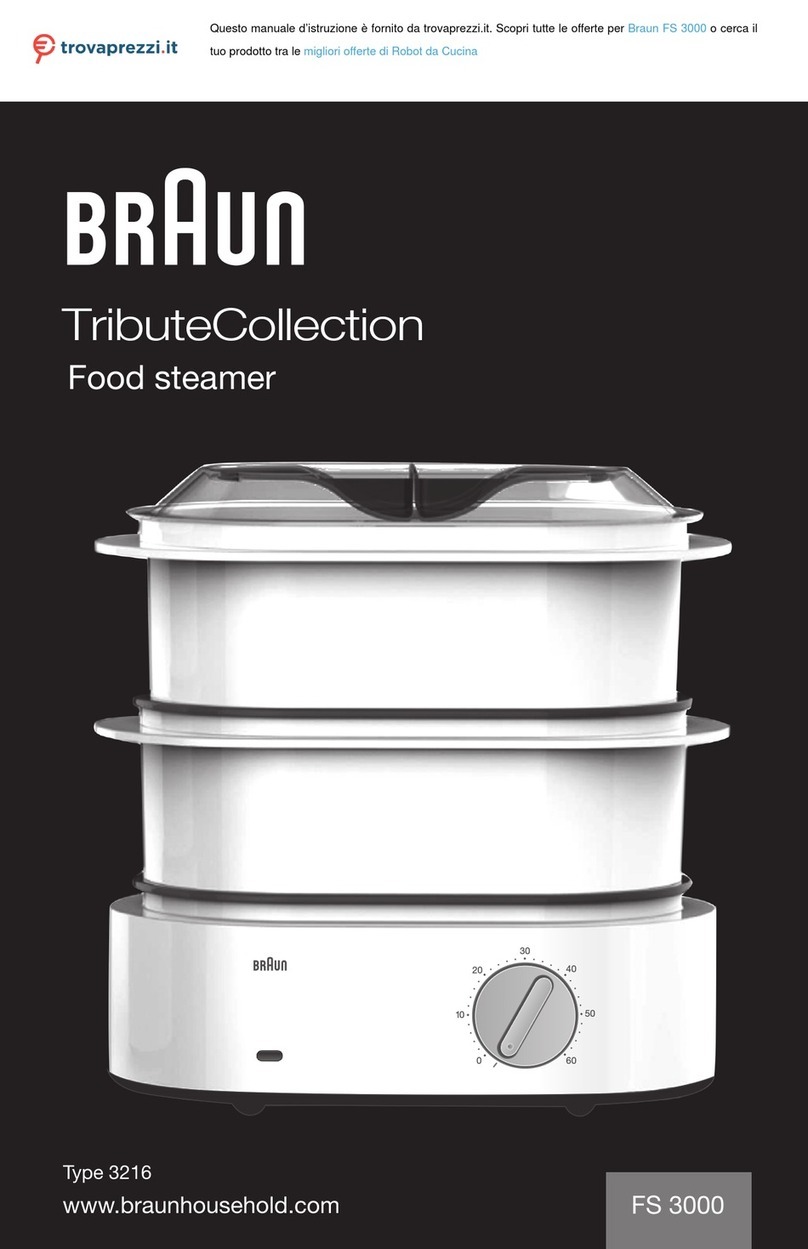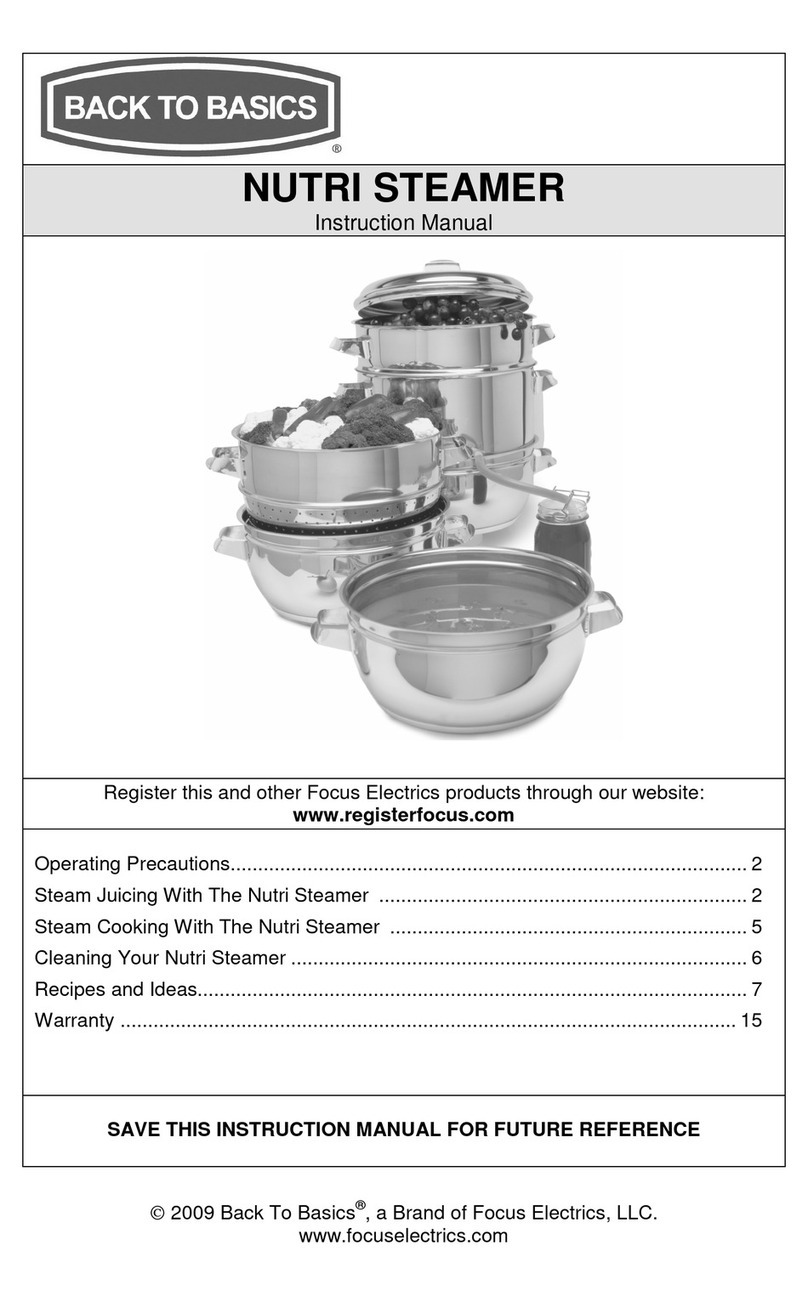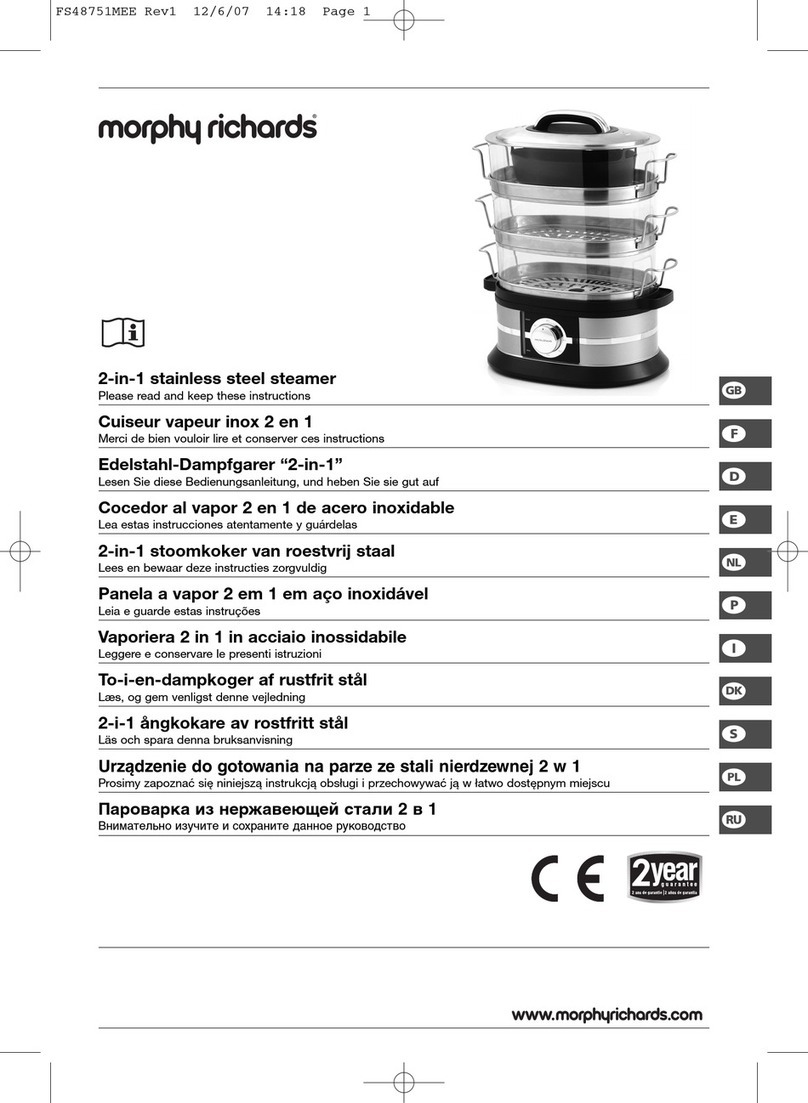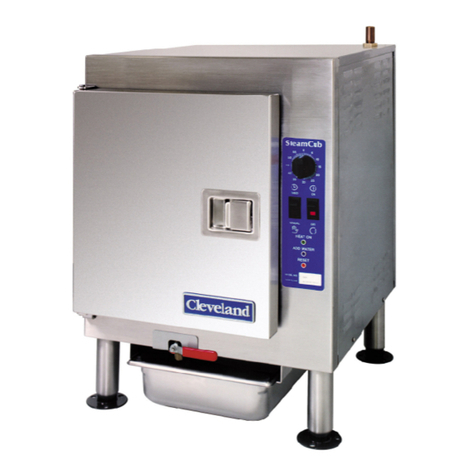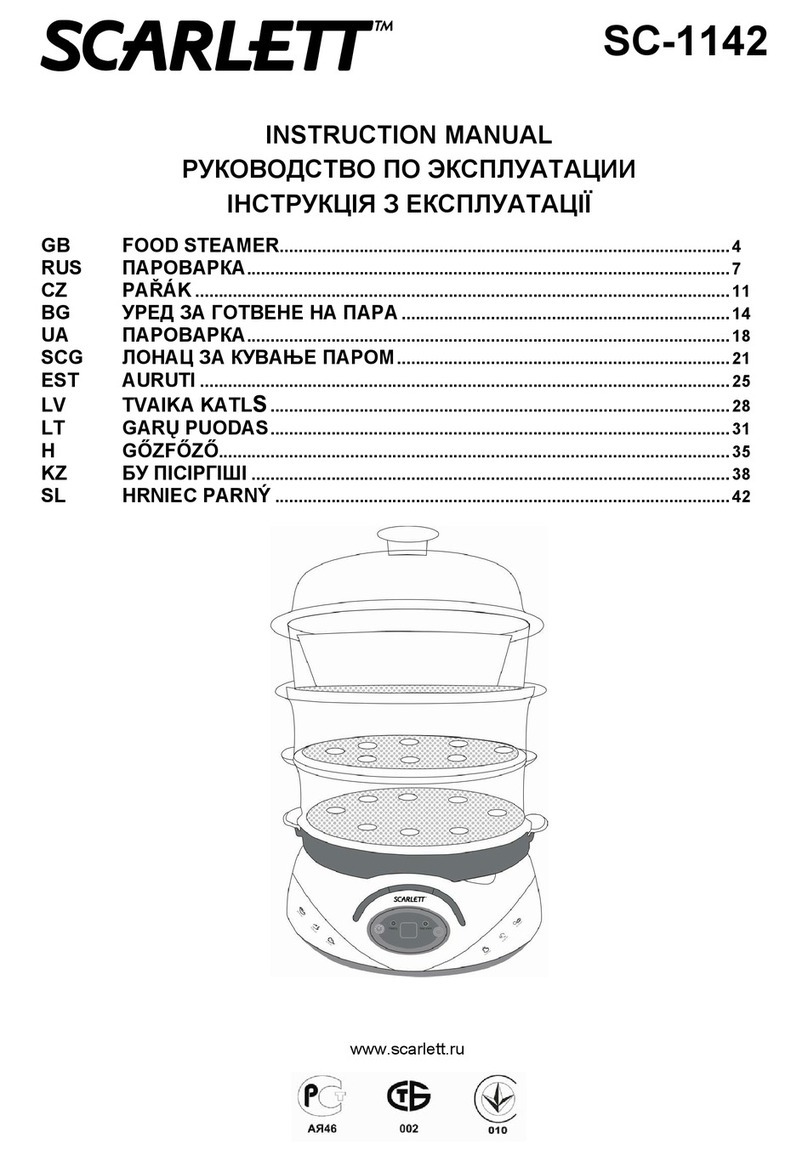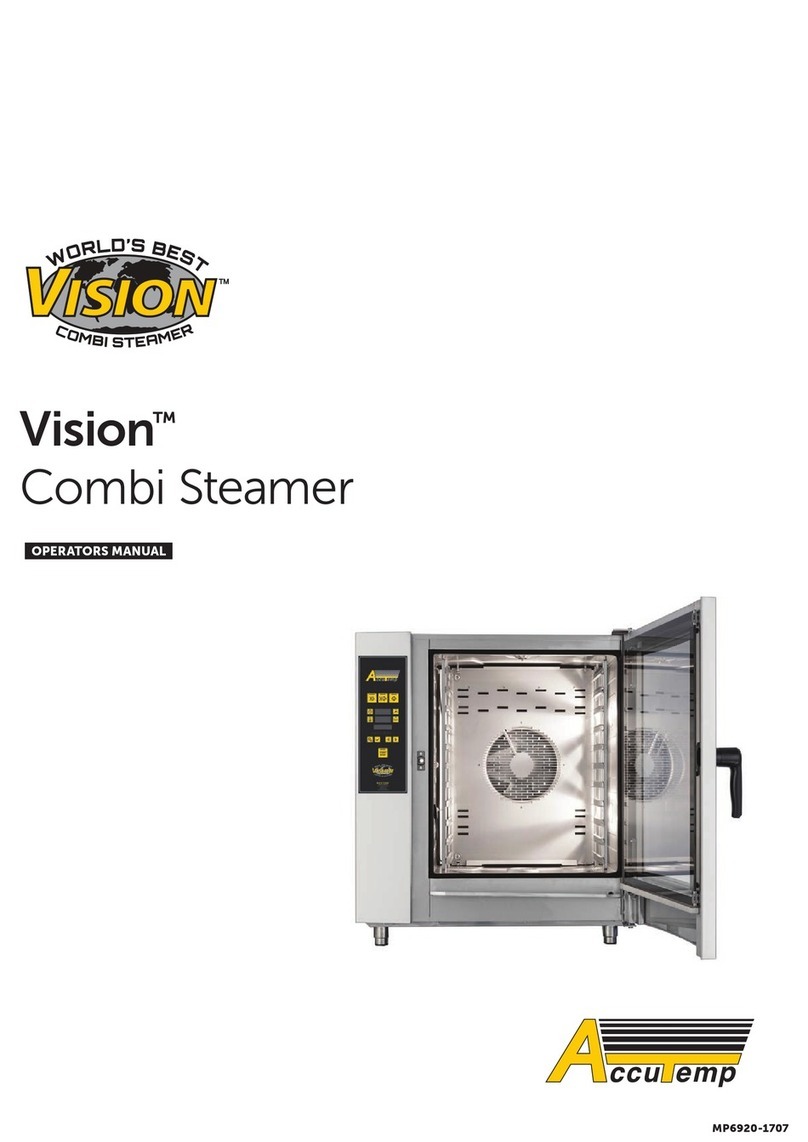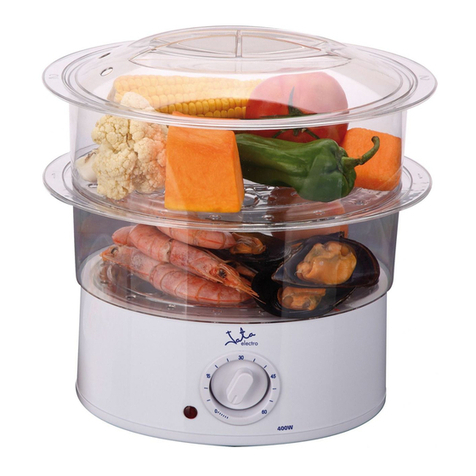5
Important safeguards for all electrical
appliances
• Fully unwind the power cord before use.
• Connect only to a 230V or 240V power outlet.
• Do not let the power cord hang over the
edge of a bench or table, touch hot surfaces
or become knotted.
• To protect against electric shock, do not
immerse the power cord, power plug or
appliance in water or any other liquid or
allow moisture to come in contact with
the part, unless it is recommended in the
cleaning instructions.
• The appliance is not intended for use by
persons (including children) with reduced
physical, sensory or mental capabilities,
or lack of experience and knowledge,
unless they have been given supervision or
instruction concerning use of the appliance
by a person responsible for their safety.
• Children should be supervised to ensure that
they do not play with the appliance.
• It is recommended to regularly inspect the
appliance. To avoid a hazard, do not use
the appliance if power cord, power plug or
appliance becomes damaged in any way.
Return the entire appliance to the nearest
authorized Kambrook service centre for
examination and / or repair.
• Any maintenance other than cleaning
should be performed at an authorised
Kambrook Service Centre.
• This appliance is for household use only. Do
not use this appliance for anything other
than its intended use. Do not use in moving
vehicles or boats. Do not use outdoors.
Misuse may cause injury.
• The installation of a residual current device
(safety switch) is recommended to provide
additional safety protection when using
electrical appliances. It is advisable
that a safety switch with a rated residual
operating current not exceeding 30mA be
installed in the electrical circuit supplying
the appliance. See your electrician for
professional advice.
• Always turn the appliance to the OFF
position, switch off at the power outlet
and unplug at the power outlet when the
appliance is not in use.
• Before cleaning, always turn the appliance
to the OFF position, switch off at the power
outlet, unplug at the power outlet and
remove the power cord, if detachable, from
the appliance and allow all parts to cool.
• Do not place this appliance on or near
a heat source, such as hot plate, oven or
heaters.
• Position the appliance at a minimum
distance of 20cm away from walls, curtains
and other heat or steam sensitive materials
and provide adequate space above and on
all sides for air circulation.
• Do not boil eggs in the water reservoir
• Do not touch hot surfaces; use the steamer
handle (if any) for lifting and carrying the
food steamer and use oven mitts to remove
the lid, steamer basket and rice/sauce
cooking bowl.
• Do not place food or liquid other than water
in the food steamer base. Only the steaming
baskets and rice cooking bowl are designed
to contain food.
• Do not place any part of the food steamer
in a gas, electric or microwave oven or on a
hot gas or electric burner.
• Do not place your face or any other body
part over the food steamer whilst in use as
the steam can cause serious burns.
• Extreme caution must be used when the
food steamer contains hot food and liquids.
Improper use may result in injury. Do not
move the food steamer during steaming.
• The temperature of accessible surfaces will
be high when the food steamer is operating
and for some time after use.
• Care should be taken when handling the
food steamer after steaming, ensuring that
the food steamer body and parts are not
touched as these may still be hot due to
residual heat.
• Avoid unnecessary removal of the lid and
steaming baskets during cooking, as steam
surrounding the food will escape.
• Do not leave the food steamer unattended
when in use.
• Do not use chemicals, steel wool, metal
scouring pad or abrasive cleaners to clean
the outside of the food steamer housing or
steamer basket as these can damaged the
housing or the steamer basket.
• To prevent damage to the food steamer
do not use alkaline cleaning agents
when cleaning, uses a soft cloth and mild
detergent.
• Do not store the food steamer with water
in the water reservoir. Always empty the
reservoir after use.
• Keep the food steamer clean. Follow the
cleaning instructions provided in this book.
